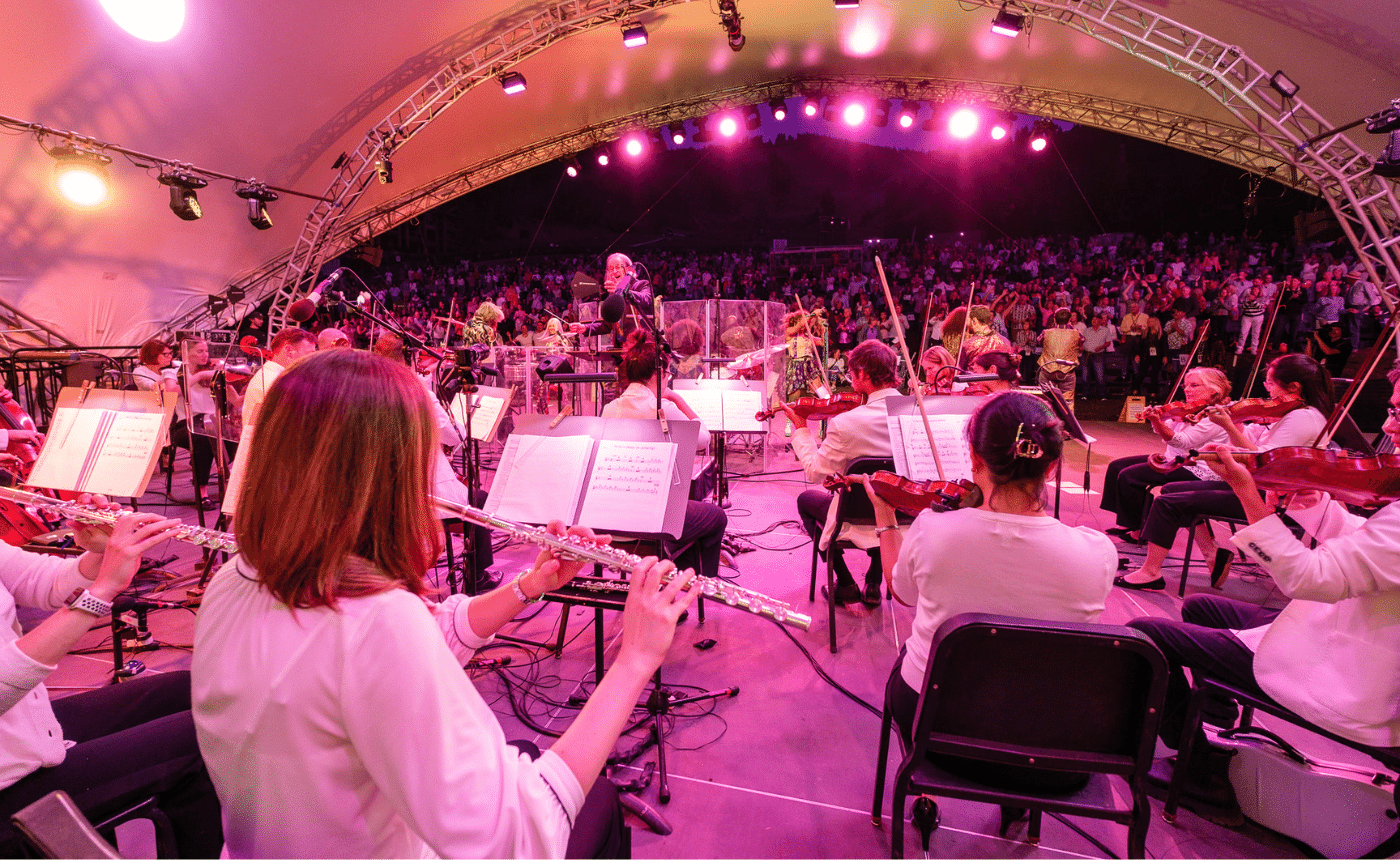Ives – Symphony No. 3, “The Camp Meeting”
Charles Ives (1874 — 1954): Symphony No. 3, “The Camp Meeting”
Instrumentation: flute, oboe, clarinet, bassoon; 2 horns, trombone; percussion; strings
Performance time: 22 minutes
Background
Charles Ives’ life, like his music, combined familiar elements in novel and surprising ways — or perhaps not so surprising if we view Ives in the context of the great tradition of independent New England thinkers that also included Emerson and Thoreau. Our national affection for creative eccentrics has left many classical music aficionados with the misimpression that Ives was the artistic equivalent of a brilliant tinkerer building rocketships in his basement; actually, Ives was rigorously educated and well versed in music theory, but combined his affection for New England traditions with esthetic principles that were truly visionary and utterly independent. He is one of two giants of American culture, the other being the poet Wallace Stevens, who command our attention for the striking similarities in their lives and their continuing influence in the arts.
Born in 1874, Ives worked in the insurance industry and lived mainly in Danbury, Connecticut; Stevens was born in 1879, worked in the insurance industry, and lived mainly in Hartford, Connecticut. They died in 1954 and 1959, respectively. Together they represent a distinctively American brand of artistic modernism. Both Ivy Leaguers (Ives attended Yale, while Stevens was a Harvard man), they combined a mastery of European traditions with a deeply American sensibility. Though they became celebrated as mavericks, trailblazers might be a more apt description; many musicians refer to Ives as “Charlie” not because they were ever friends, but because Ives is so deeply American and because his work strikes listeners so personally. No composer has had a deeper impact on the American composers who came after him.
Reading critical analysis of Ives’ major works, such as his symphonies, can be a confusing experience. How can these works be simultaneously simple and complex? But while incorporating simple sources such as familiar folk tunes, these works are often densely layered, with multiple melodies, tonalities and rhythms unspooling simultaneously. Listening to them can be comparable to listening to two or three different conversations at a cocktail party and tracking their connections in real time. His biographers speculate that Ives’ delight in this kind of simultaneity resulted from hearing his father, George Ives, lead band music on the town green in Danbury while other bands were playing different music within earshot.
Whether the listening public has caught up with Charles Ives is a matter of some debate. But in an era of self-conscious irony in the performing arts, it helps to remember that Ives’ art is anything but ironic. This is music of simple, straightforward materials handled with consummate, sophisticated craft. It was ahead of its time when he composed it…and it probably still is.
What to Listen For
Though Ives’ music is never without humor, he was serious about symphonic form. He composed his first symphony during his undergraduate years at Yale University — a work he would later disparage, though in retrospect it would seem that his criticisms reflect not a lack of quality, but his willingness to subordinate his penchant for originality and even rebelliousness to the influences past symphonists. Many listeners hear a Tchaikovsky-like sound in it. But then, they also hear the sound of Mozart in early Beethoven symphonies and concertos.
He began work on his third symphony in 1901, when he was 37, and is thought to have finished it three years later. It won the Pulitzer Prize for Music in 1947 — an unusually long gap that reflects the lag in recognition of his importance as a composer, but also the gap between composition and premiere, which did not take place until 1946 under the baton of Ives’ friend and advocate Lou Harrison.
The titles that Ives applied to the symphony’s three movements — “Old Folks Gatherin’,” “Children’s Day,” and “Communion” — reflect the sources we hear in the symphony, which include martial airs, popular dances, classical melodies, and religious music. But most of all, the feeling of religious hymns predominates. The first two movements are based on hymns that would have been more readily recognized in Ives’s lifetime; whether or not we know these songs, we cannot mistake the devotional feelings that the melodies evoke. The third movement is constructed around an organ piece that Ives also based on a hymn and intended for church use. Commenting on the symphony, Ives noted, “The themes are mostly based around hymns and from organ pieces played in Central Presbyterian Church [where Ives worked part-time in his 20s as an organist] around 1901. Lead pencil score was finished about 1901. But the final ink score (now lost) had, I think, a few of less off-shadow parts in it, and also church bells, that are crossed out in the old score…The middle movement was the ‘Children’s Day Parade’ (for string quartet and organ), played in Central Presbyterian Church, New York, for the organ alone, 1902…”
Listeners who know their American symphonies will recall that Virgil Thomson’s Symphony No. 1 bears the title “Symphony Based on a Hymn Tune.” It dates to 1929, about 25 years later than Ives’ third.












